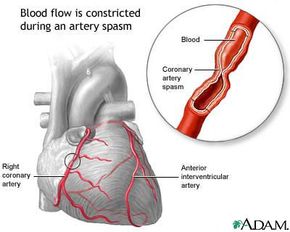When someone has a heart attack, chances are very good that that person had at least one, and probably several, primary risk factors. Most heart attacks are caused by atherosclerosis, or narrowing of the arteries.
Arteries get clogged with fatty substances in our diet, most notably LDL cholesterol and triglycerides. A high-fat diet, high cholesterol, high blood pressure and lack of exercise can all lead to that fatty plaque building up on the inner lining of the arteries, the vessels that supply blood to the heart. When platelets, the blood's clotting agents, get stuck to this plaque, a blood clot can develop and block blood flow to the heart muscle. Deprived of oxygen, heart cells start to die. That's a heart attack.
Advertisement
This is preventable. Even people with a genetic disposition to heart disease can make dietary and lifestyle changes that help keep their hearts healthy. But what about people who have no genetic tendency toward heart disease, eat low-fat diets, get their vegetables, exercise daily and don't smoke? What about when those people have heart attacks?
It's rare, but it does happen. Two of the primary causes of heart attack in a seemingly healthy heart are blood clots and coronary artery spasms. Both can lead to a blockage of blood flow to the heart. If a blood clot goes untreated for too long, or if a coronary artery spasm lasts long enough, a potentially fatal heart attack can result.
In this article, we'll take a look at these two potential causes of heart attack in an otherwise healthy heart. We don't really know why coronary artery spasms occur, although doctors have some good guesses; but we do know what causes blood clots, so those are probably easier to prevent.
Advertisement



